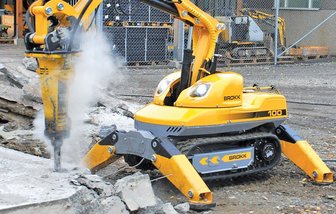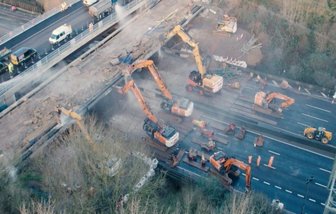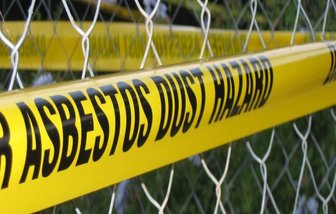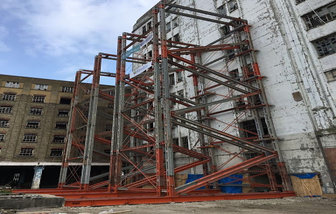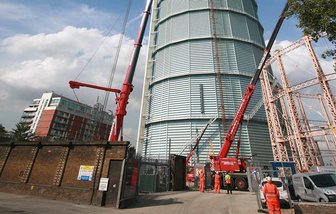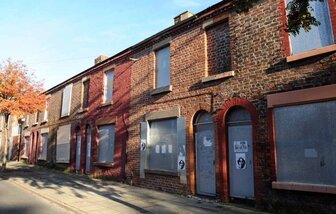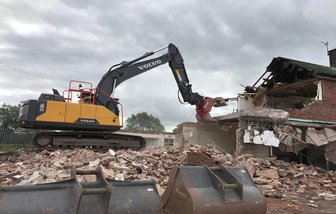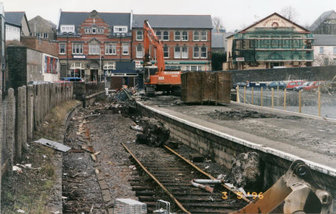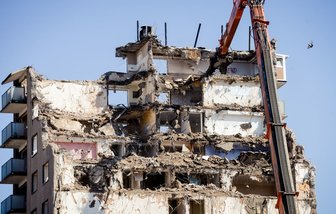Asbestos in demolition risks, hazards and management
One of the key issues arising in demolition these days is asbestos. Widely used in construction projects by previous generations, asbestos is now accepted as the UK’s largest occupational killer and there are strict guidelines for the safe removal and disposal of the asbestos. Most work with asbestos needs to be carried out by a licensed asbestos removal contractor This includes work on asbestos coating and asbestos lagging; and work on asbestos insulation board (AIB) where the demolition risk assessments demonstrates that the fibre release will be high, e.g . the material is significantly damaged, or the work is not short duration work.
” Short duration” means any one person doing this type of work for a total of less thank two hours, in any seven consecutive days. The total time spent by all workers must not exceed two hours. This includes time spent setting up, clearing and cleaning up. Non-licensed work includes includes work on asbestos-containing textured coatings and asbestos cement.
From the 6 April 2012, some non-licensed work needs to be notified to the applicable enforcing authority. Brief written records should be kept of non-licensed works, which has to be notified, e.g. copy of the notification with a list of workers on the job, plus the level of likely exposure of those workers to asbestos. This does not require air monitoring on every asbestos removal demolition project, if an estimate of degree of exposure can be made based on experience of similar past tasks or published guidance.
Control of Asbestos Regulations (CAR) 2012
By April 2015, all workers/ self-employed doing notifiable non-licensed work with asbestos must be under health surveillance by a Doctor. Workers who are already under health surveillance for licensed work need not have another medical examination for non-licensed work. BUT medicals for notifiable non-licensed work are not acceptable for those doing licensed work. There has been some modernisation of language and changes to reflect other legislation, e.g. the prohibition section has been removed as the prohibition of supply and use of asbestos is now covered by REACH.
Asbestos Regulations also include the duty to manage asbestos in non-domestic premises. The regulations require mandatory training for everyone liable to be exposed to asbestos fibres at work. These include maintenance workers and others who may come into contact with or who may disturb asbestos as well as those involved in asbestos removal work.
When work with asbestos or which may may disturb asbestos is being carried out, the CAR 2012 requires employers and self-employed to prevent exposure to asbestos fibres. Where this is not reasonably practicable, they must make sure that exposure is kept as low as reasonably practicable, they must make sure that exposure is kept as low as reasonably practicable by measures other than the use of respiratory protective equipment (RPE). The spread of asbestos must be prevented. The Regulations specify the work methods and controls that should be used to prevent exposure and spread.
The importance of Respiratory Protective Equipment
Respiratory Protective Equipment is an important part of the regime but it must not be the sole measure used to reduce exposure and should only be used to supplement other measures. Work measures that control the release of fibres such as those detailed in the demolition systems for non-licensed work should be used. RPE must be suitable, must fir properly and must ensure that worker exposure is reduced as low as is reasonably practicable. Most asbestos removal work must be undertaken by a licensed contractor but any decision on whether particular work is licensable is based on the risk. Work is only exempt from licensing if:
- The exposure of employees to asbestos fibre is sporadic and low intensity (but exposure cannot be considered to be sporadic and of low intensity.
- It is clear from the risk assessment that the exposure of any employee to asbestos will not exceed the control limit; and the work involves , short non-continuous maintenance activities if any one person carries out work with these materials for less than 1 hour in a 7-day period. The total time spent by all workers on the work should not exceed a total of 2 hours.
- Removal of materials in which the asbestos fibres are firmly linked in a matrix. Such materials include: asbestos cement; textured decorative coating and paints which contain asbestos; articles of bitumen, plastic, resin or ribber which contain asbestos where their thermal or acoustic properties are incidental to their main purpose(e.g. vinyl floor tiles, electric cables, roofing felt); and other insulation products which may be used at high temperatures but have no insulation purpose (e.g. gaskets, washers, ropes and seals).
- Encapsulation or sealing of ACMs which are in good condition; or air monitoring and control, and the collection and analysis of samples to find out if a specific material contains asbestos.
Under the CAR 2012, anyone carrying out work on asbestos insulation, asbestos coating or asbestos insulating board (AIB) needs a licence issues by the HSE unless they meet one of the exemptions above.
Although work may not need a licence to carry out a particular job, there is still a need to comply with the rest of the requirements of the CAR 2012. If the work is licensable there are a number of additional duties. Duty-holders need to:
- Notify the enforcing authority responsible for the site where they are working ( for example the HSE or the local authority)
- Designate the work area
- Prepare specific asbestos emergency procedures and pay for their employees to undergo medical surveillance.
REMOTE DEMOLITION
Restricted access is also often a problem and as can be seen from the photograph, the Brokk 180 was just the tool to demolish this particular bridge that had been “covered” by the new replacement
BRIDGE DEMOLITION
This type of work means that you need elite professionals because the lives of people and the area’s economy depend on quality and safe infrastructure. Since inception, Manchester Demolition now
ASBESTOS MANAGEMENT
There are a lot of considerations to make when carrying out demolition or DIY projects on residential and commercial projects. One of the questions you’ll need to consider is how do you go
FACADE RETENTION
As a modern and professional demolition contractors, we have developed our capabilities to provide Facade Retention and Temporary Propping services within any Demolition Contract
GASHOLDER DEMOLITION
Some of our employees remember demolishing our first gasholder in the late 1990s. Since that date, our staff have demolished over 25 throughout England and Wales, giving the
HOUSE DEMOLITION
Why let your house demolition efforts feel stressful. We have over 50 years experience in house demolition in Manchester, we are able to deliver a variety of demolition.
CHEMICAL WASTE REMOVAL
Our hazardous waste removal and disposal service covers substances such as paint and oils, and items which incorporate toxic chemicals or liquids such as lead acid batteries, aerosols and
CRUSHING & SCREENING
Manchester Demolition provide a complete range of hard and soft rock crushing solutions. With a large modern fleet of heavy machinery alongside crushers and screeners and highly
DISMANTLING CONTRACTORS
A combination of dismantling and demolition is often beneficial as it permits the recovery of assets, enabling these to be recycled, re-used or sold to offset the client’s costs. The scope of dismantling
EMERGENCY DEMOLITION
Unfortunately, not all demolition work has a pre-plan behind it. You may have a building that perfectly happy with , but due to unforeseen circumstances can create an emergency that requires a
RAILWAY DEMOLITION
Our railway experience started in 1993, when some of the more experienced in our team demolished our first road over Rail Bridge on the Liverpool St Station to Norwich line as part of the original
HIGH-RISE DEMOLITION
Our team has been involved with the demolition of many High-Rise Structures throughout the United Kingdom. The range of structures has also been extensive, such as:
Ready to start your project ?
Let's Work Together
Please complete the form below and someone from the Manchester Demolition team will be in touch.

